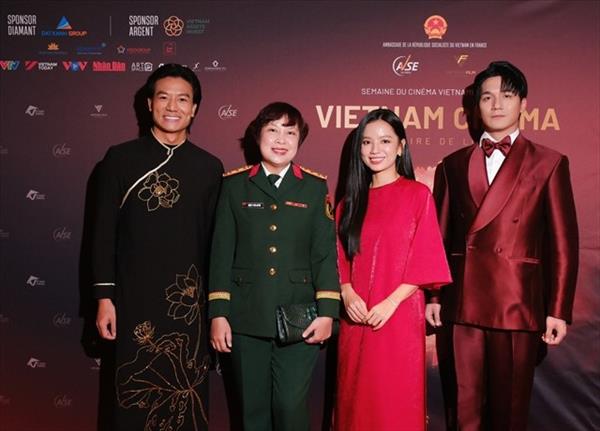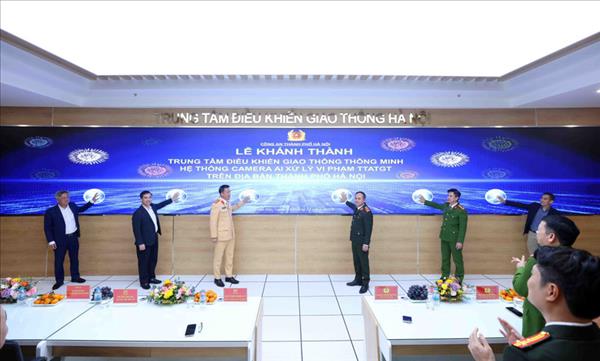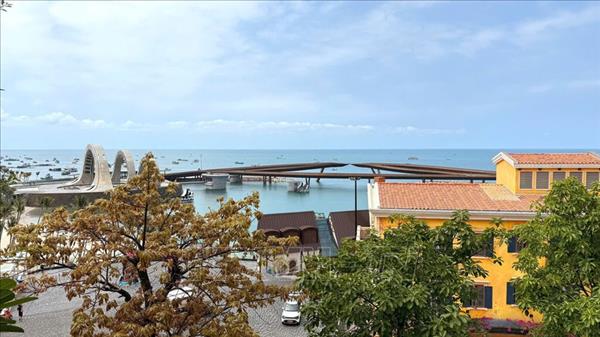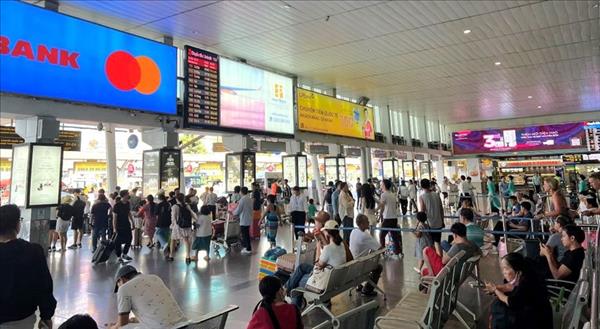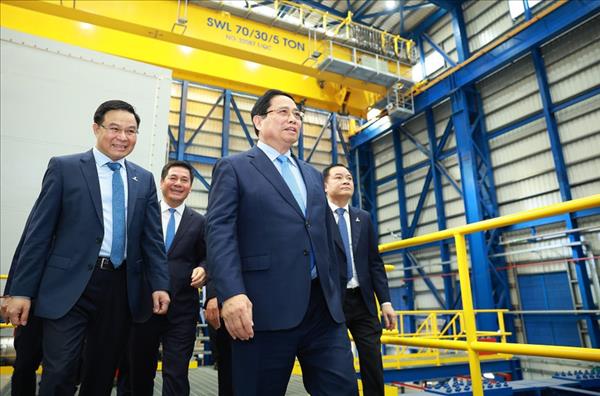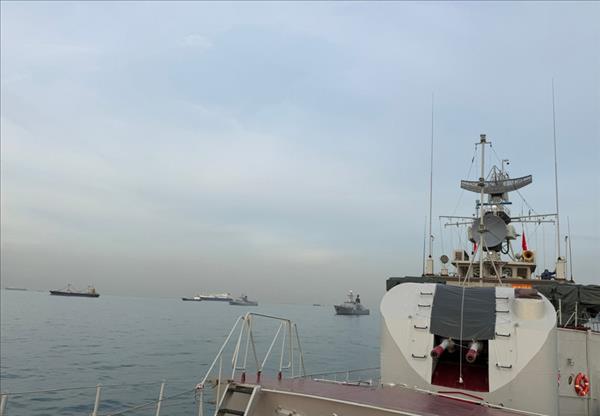Despite its small scale, the island with its significant strategic position has long been regarded important in the country’s marine economic development, security and national defence strategy in the Gulf of Tonkin.
Later in 1994, the Prime Minister issued Decision 397/TTG approving the development of the Bach Long Vi island district into a district-level administrative unit and a fishery logistics centre in the Gulf of Tonkin.
With a harbour that went into operation in 2000, the island district provides storm shelters for about 11,000 fishing boats each year.
Bach Long Vi is home to many species of sea grass, 65 seaweed species, 94 coral species, 110 species of marine zooplankton, 227 species of marine phytoplankton, and 451 species of marine fish.
It also boasts 17 species of mangroves and 125 benthic or seafloor dwelling species.
The island, housing nearly 1,000 residents, has been built to become a fishery logistics centre, thus receiving average annual arrivals of up to 30,000 boats and 200,000 fishermen.
Do Duc Hoa, Chairman of the Bach Long Vi People’s Committee, said his district has been prioritizing three strategic missions for socio-economic development by 2020, which are protecting the national sovereignty over seas and islands, building infrastructure system and developing the economy based on sea and island.
Bach Long Vi, together with Song Cam, Dinh Vu, Lach Huyen, Nam Do Son, formed the main terminals of Hai Phong seaport.
Endowed with a huge resource of valuable marine creatures, Bach Long Vi has chosen fishery and services as its spearheaded sectors.
From 2017, the locality is aiming to develop a wide range of key services, including logistics, oil & gas, banking, insurance, marine medicine and finance.
Bach Long Vi has all potentials needed to become a hub of eco-tourism as well as high-end marine and convalescence tourism in the future.
The local authorities are also working to make the Bach Long Vi marine reserve set up under the Prime Minister’s Decision No 2630/QD-TTG operate in a more efficient manner.
The Bach Long Vi marine reserve is among the eight biggest fishing grounds in the Gulf of Tonkin. Its fish and squid reserve amount to 78,000 and 5,000 tonnes, of which 38,000 and 2,500 tonnes can be caught on an annual basis. People also found sea cucumbers and abalones gathering in large here in addition to the residency of many rare and endemic species.
The sea-based economic activities have contributed to better the living standards of islanders.
Recently, the Hai Phong youth association has launched a number of projects in a bid to accelerate the economic growth in the Bach Long Vi island district.
One of these projects is the construction of a clean water reservoir with a capacity of 60,000 cubic metres. Under a total investment of almost 188.2 billion VND (8.3 million USD), the project will soon complete its first phase.
Once become operational, it is expected to supply 500 local residents with drinkable water and contribute to encouraging more people to relocate to the island.
The youth association has also put an abalone breeding centre into operation, which helped create jobs for locals, protect the environment and sustainably develop the economy.
According to Dao Trong Tue, Vice Chairman of the Bach Long Vi district People’s Committee, the district recorded positive outcomes in socio-economic and cultural development in the first half of 2016 that exceeded all quotas set for the period.
Bach Long Vi will steer future development of its economy towards industry & construction, trade & commerce and agro-fishery, with average budget collection growing between 12 and 15 percent per year./.
VNA/VNP


